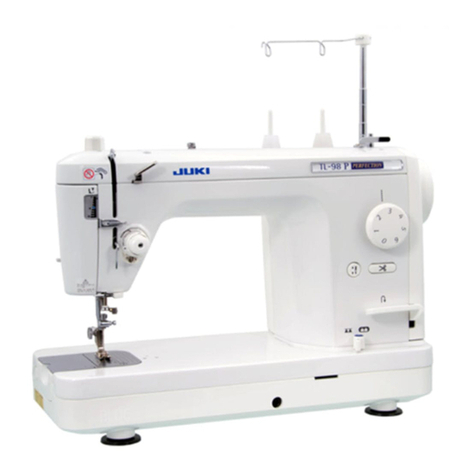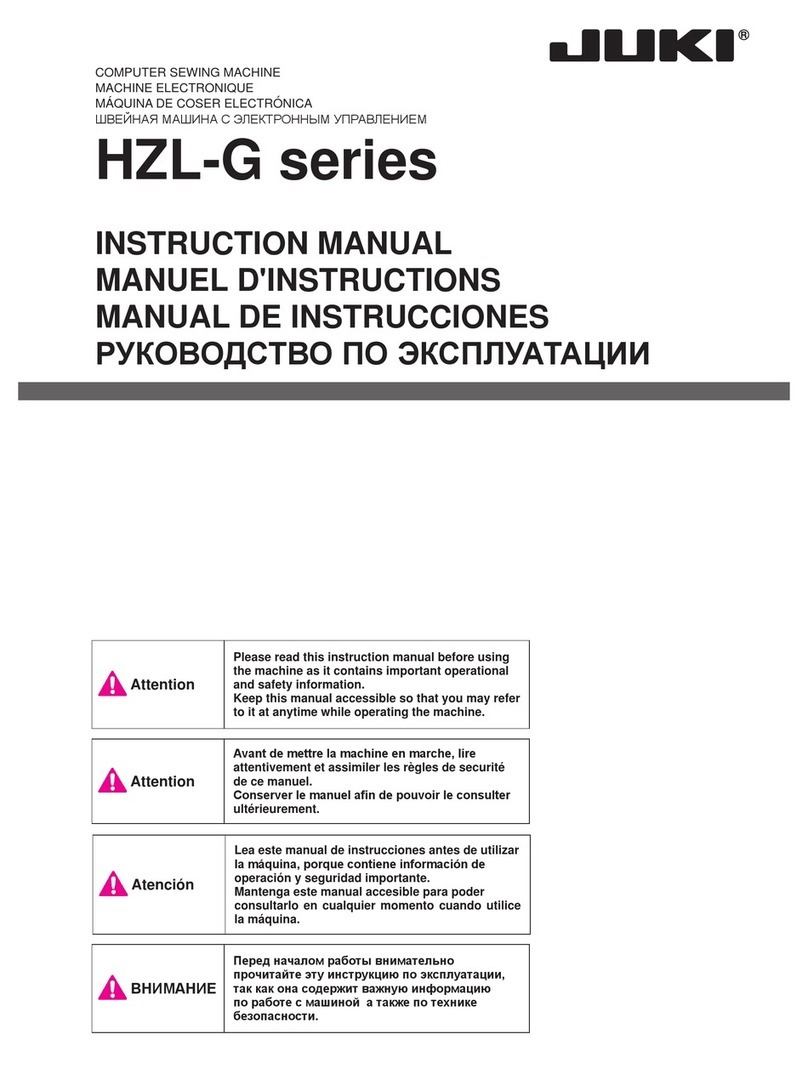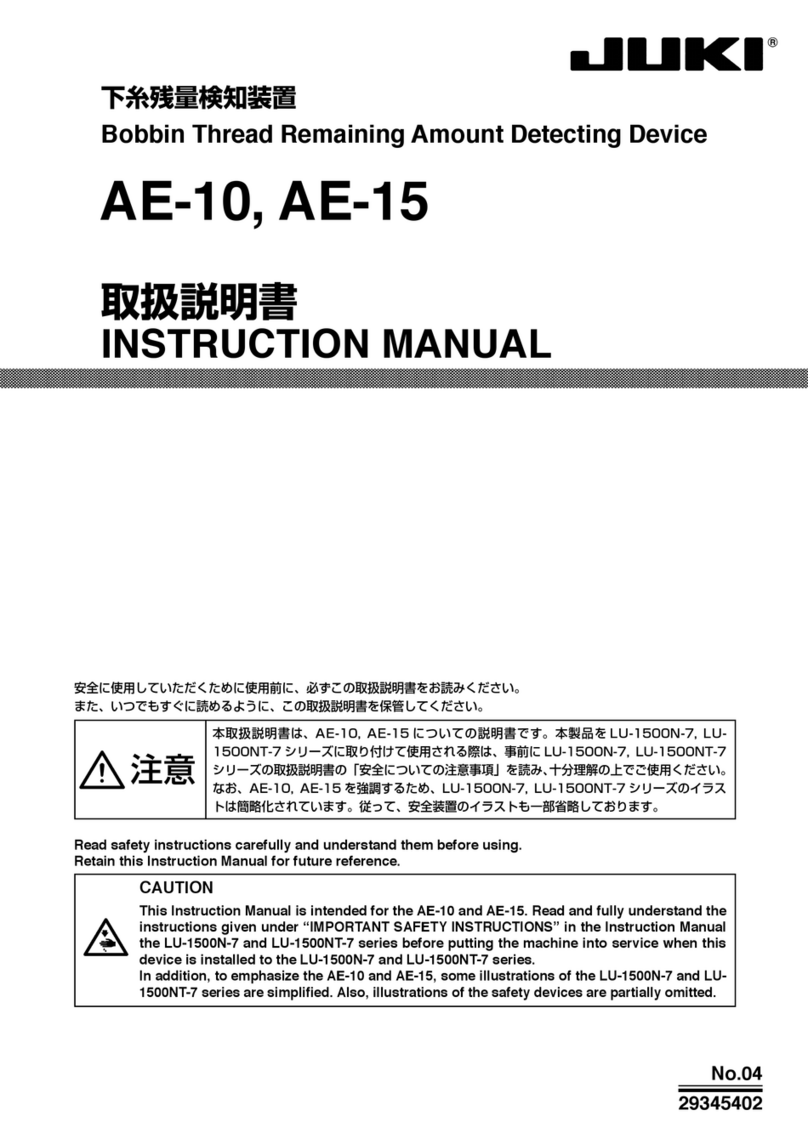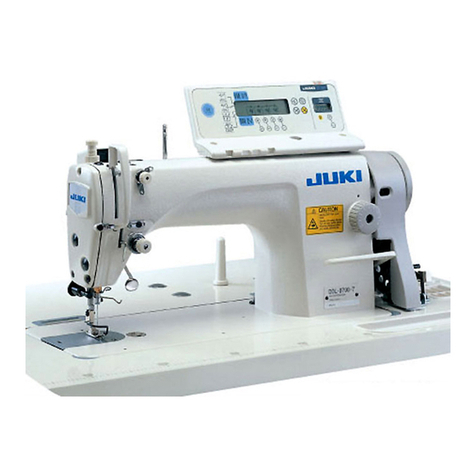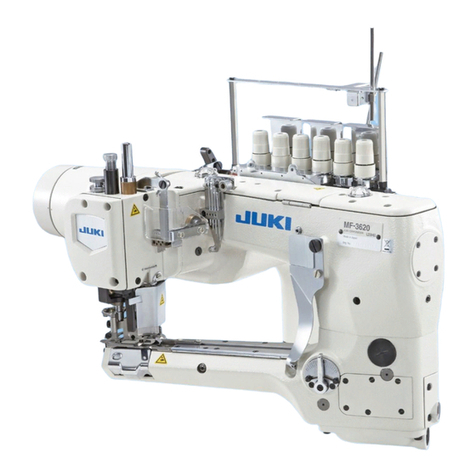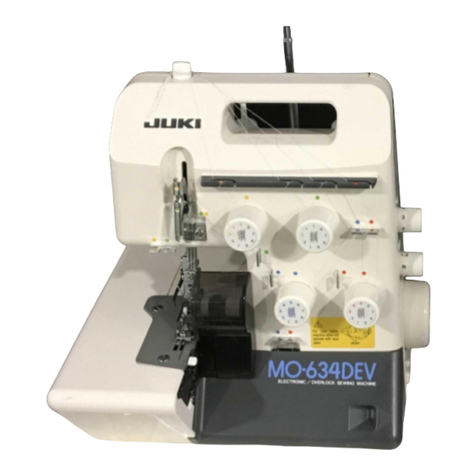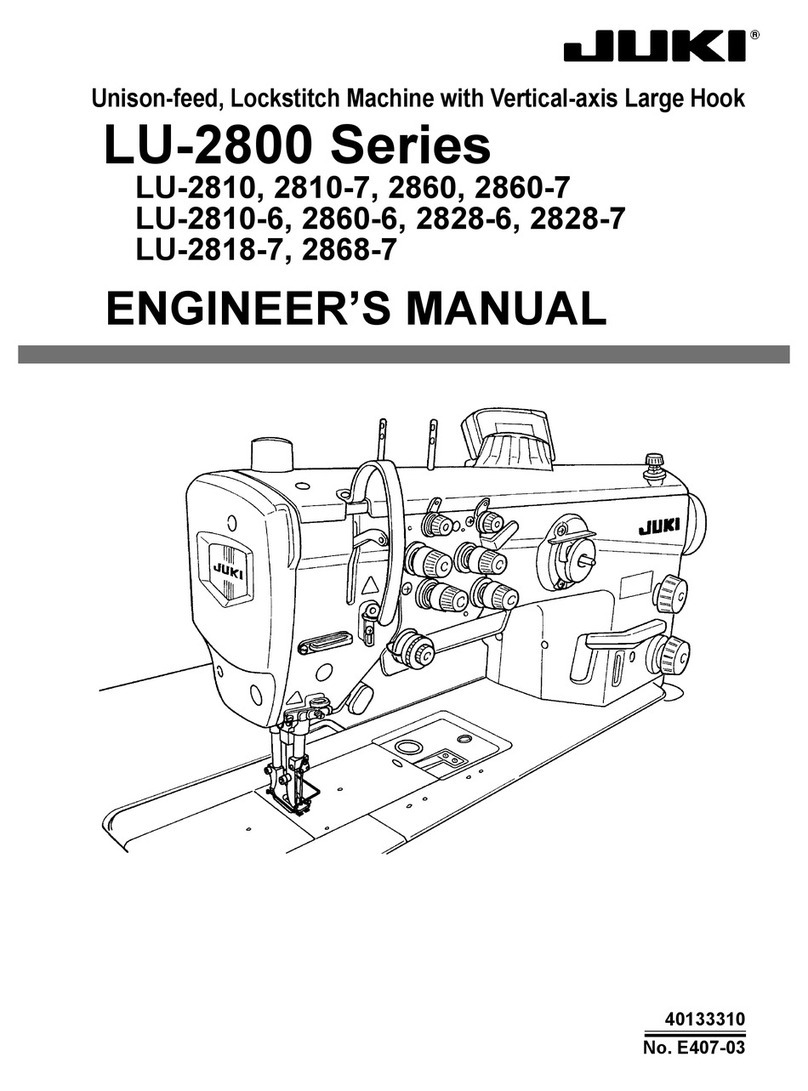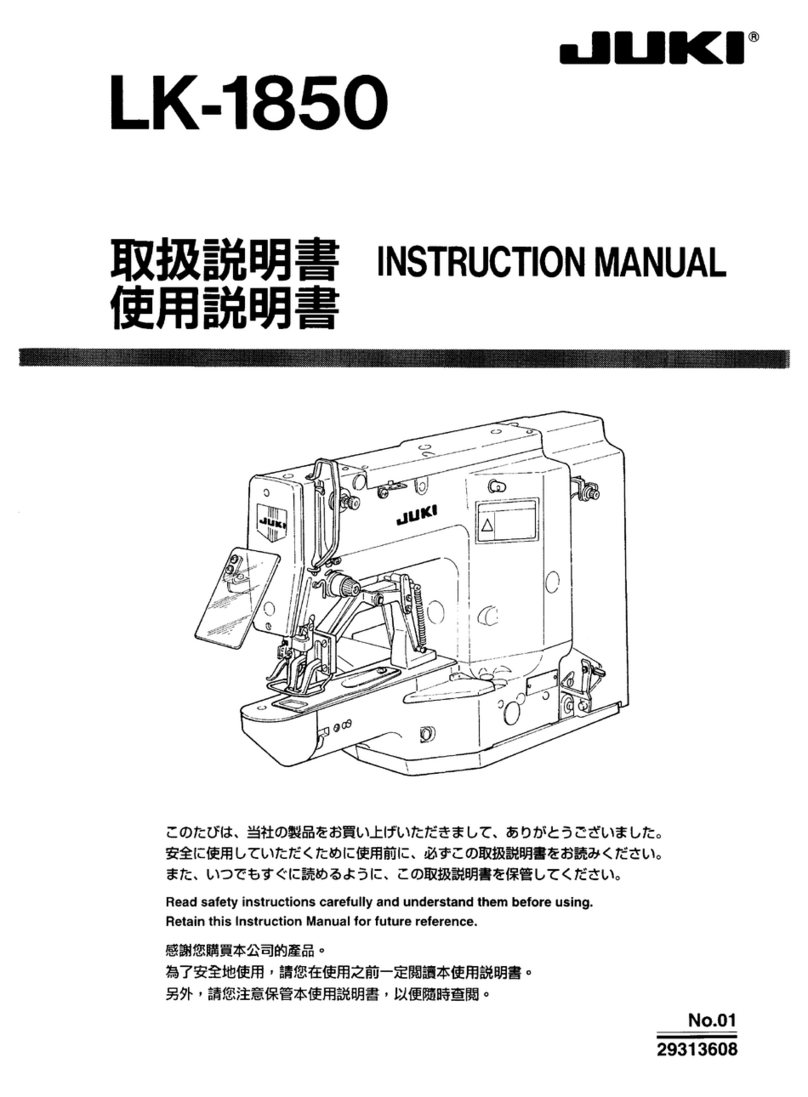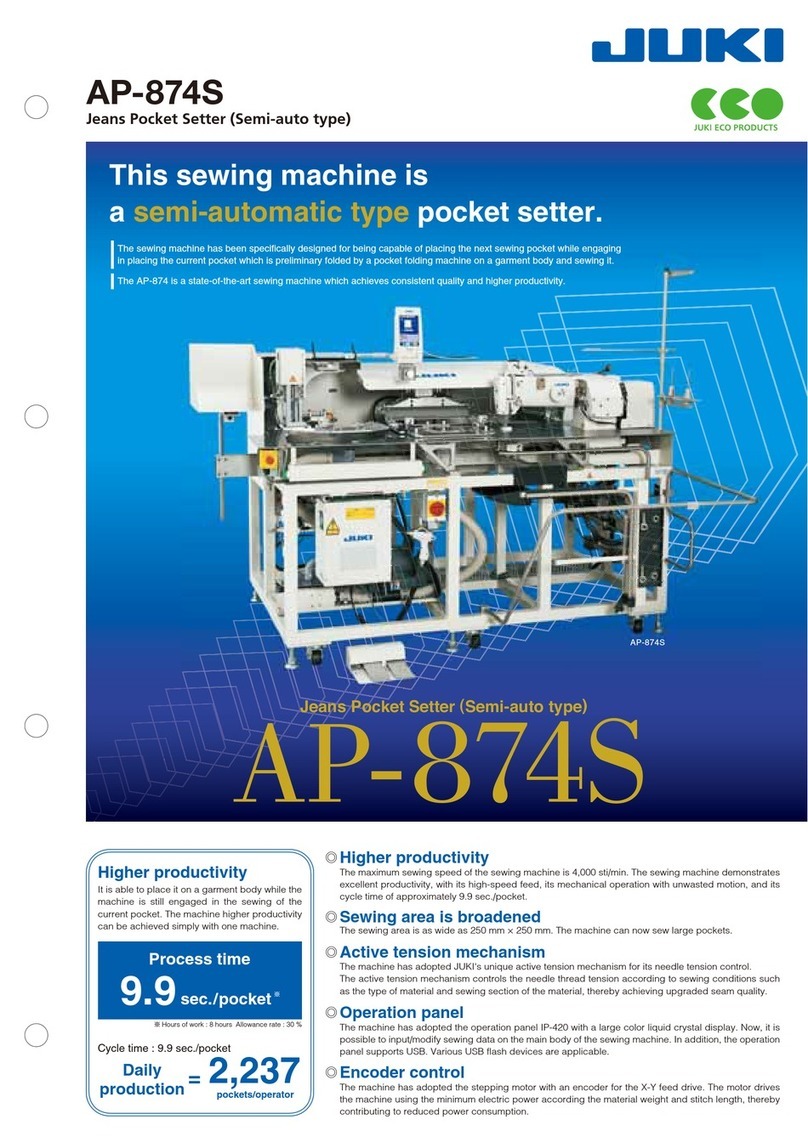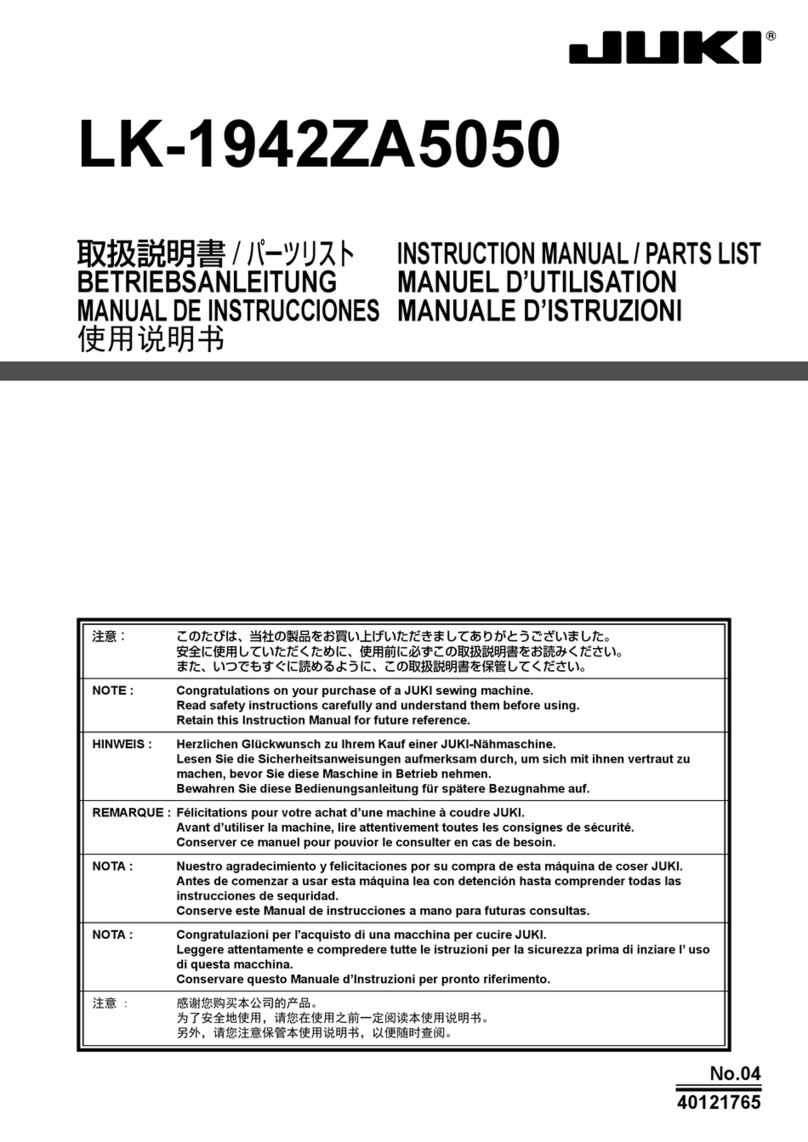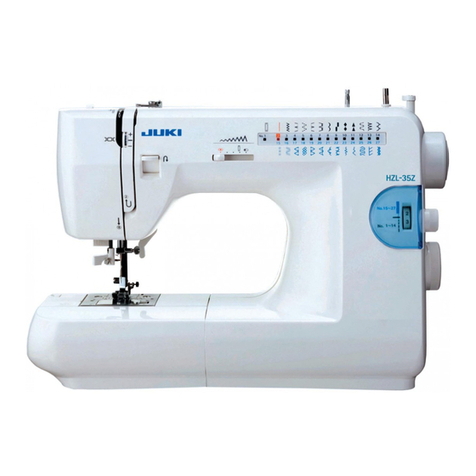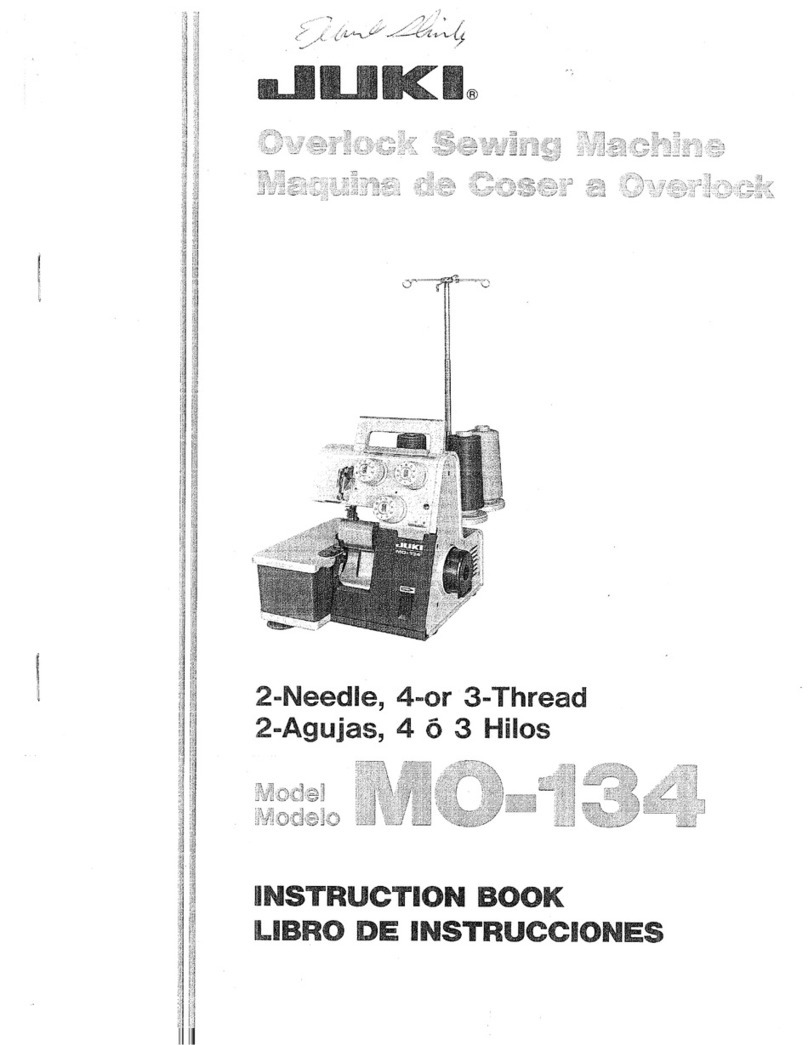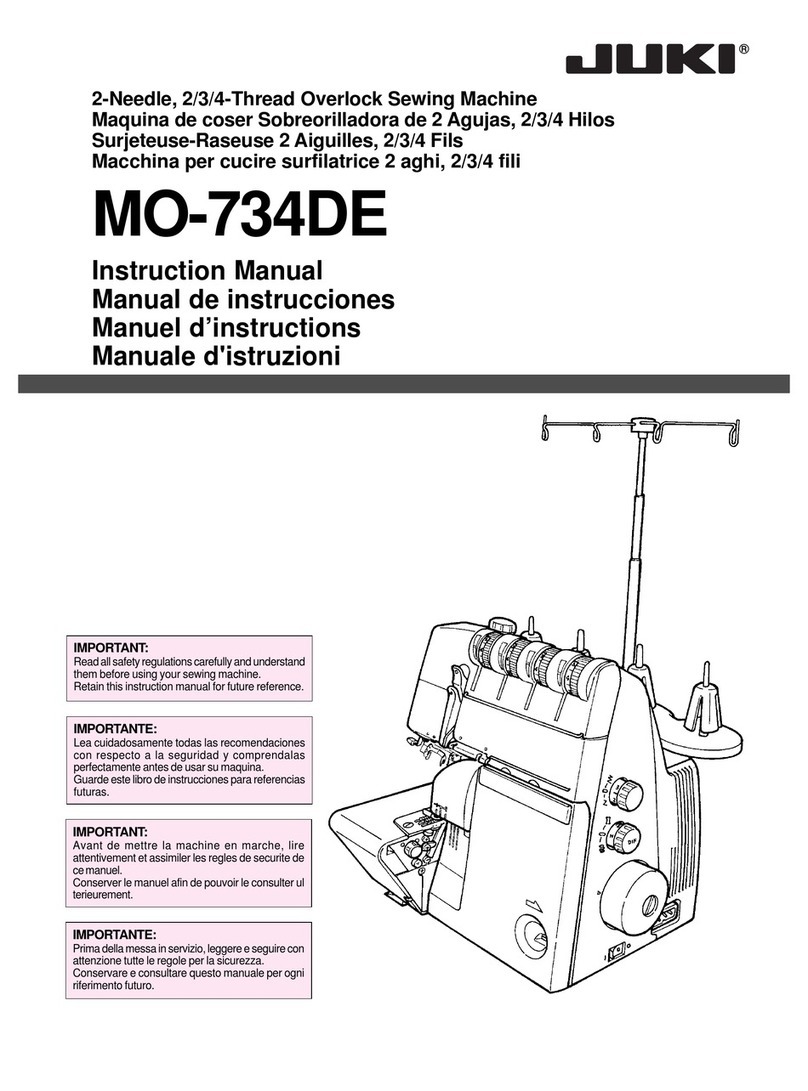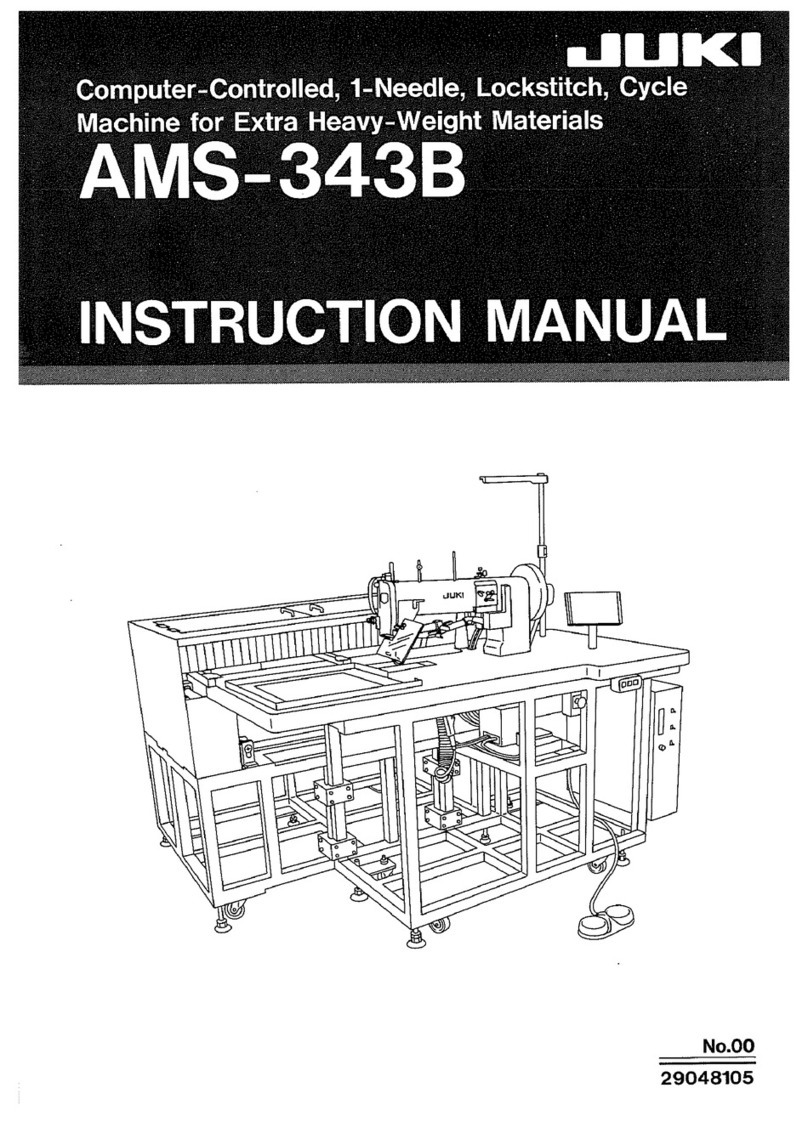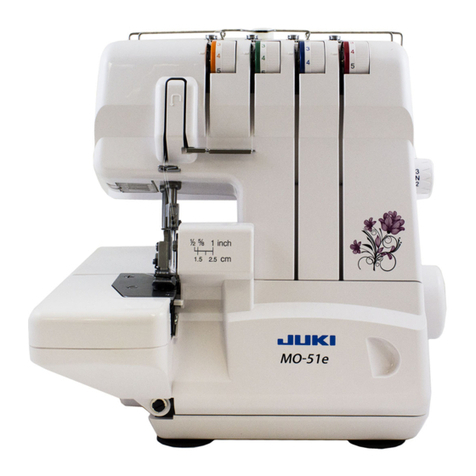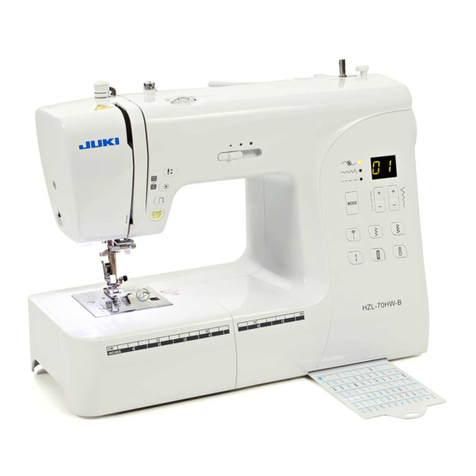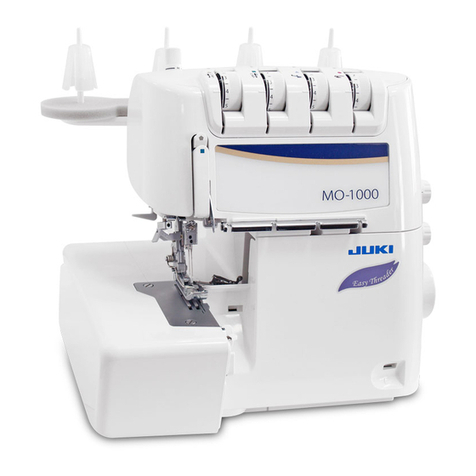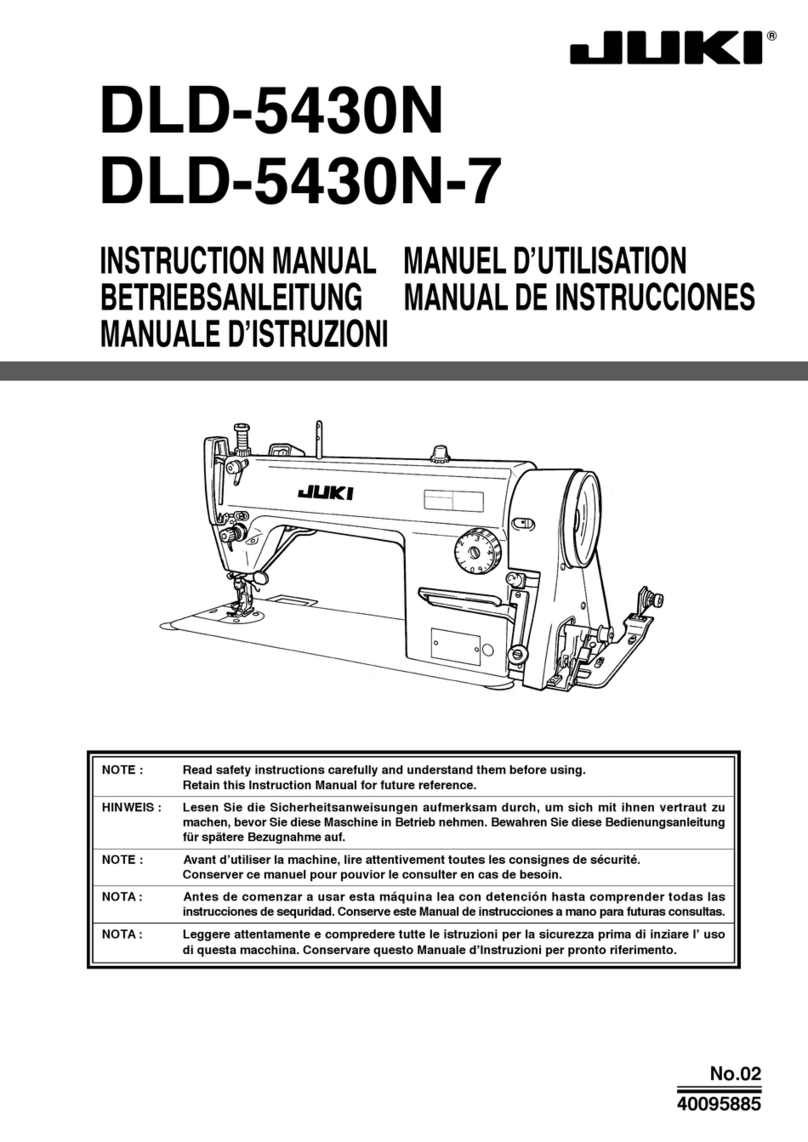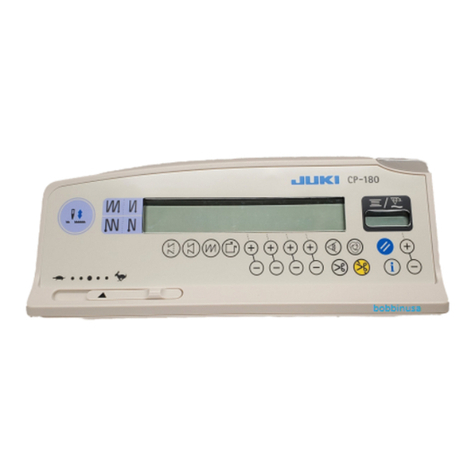
– 1 –
1. SPECIFICATIONS
No. Item Application
1 Model LS-2342S LS-2342S-7
2 Model name Cylinder-bed, 1-needle, unison-feed,
lockstitch machine
(Standard type)
Cylinder-bed, 1-needle, unison-feed,
lockstitch machine with automatic thread
trimmer (Standard type)
3 Application Medium- to heavy-weight materials, car seat, furniture
4 Sewing speed Max. 2,500 sti/min (See "6. SEWING SPEED TABLE" p.27.) *1
5 Needle SCHMETZ 134-35
(Nm 100 to Nm 180, Standard : Nm 140)
6 Applicable thread size for sewing #40 to #5
(US : #33 to #138, Europe : 90/3 to 20/3)
#30 to #5
(US : #46 to #138, Europe : 60/3 to 20/3)
7 Applicable thread size to be cut #30 to #5
(US : #46 to #138, Europe : 60/3 to 20/3)
8 Stitch length Max. 9 mm (forward/reverse feed)
9 Stitch length dial 1-pitch dial 2-pitch dial
10 Presser foot lift Hand lifter : 10 mm, Automatic presser foot lifter : 20 mm
11 Stitch length adjusting mechanism By dial
12 Reverse stitch adjusting method By lever Air cylinder type
(with touch-back switch)
13 Thread take-up Link type
14 Needle bar stroke 40 mm
15 Amount of the alternate vertical
movement
1 mm to 9 mm (Alternate vertical dial adjustment type)
16 Hook Full-rotary vertical-axis 1.6-fold hook (Latch type)
17 Feed mechanism Elliptical feed
18 Top and bottom feed actuation
mechanism
Timing belt
19 Thread trimming method Cam-driven scissors type
20 Lubrication Concentrated tank type oil wick lubrication (partially by manual)
21 Lubricating oil JUKI New Defrix Oil No. 2 (equivalent to ISO standard VG32)
22 Tube diameter 72 mm
23 Space under the arm 347 mm × 127 mm
24 Hand wheel size Outer diameter : ø123 mm
25 Motor/Control box SC-922B
26 Machine head weight 61 kg 63 kg
27 Rated power consumption 310VA
28 Noise - Equivalent continuous emission sound
pressure level (LpA) at the workstation:
A-weighted value of 83.0 dB; (Includes
KpA = 2.5 dB); according to ISO 10821-
C.6.3 - ISO 11204 GR2 at 2,500 sti/min.
- Sound power level (LWA);
A-weighted value of 89.5 dB; (Includes
KWA = 2.5 dB); according to ISO 10821-
C.6.3 - ISO 3745 GR2 at 2,500 sti/min.
- Equivalent continuous emission sound
pressure level (LpA) at the workstation:
A-weighted value of 77.5 dB; (Includes
KpA = 2.5 dB); according to ISO 10821-
C.6.3 - ISO 11204 GR2 at 2,500 sti/min.
*1 The speed setting according to the amount of the alternating vertical movement of the walking foot and presser
foot is automatically carried out.
